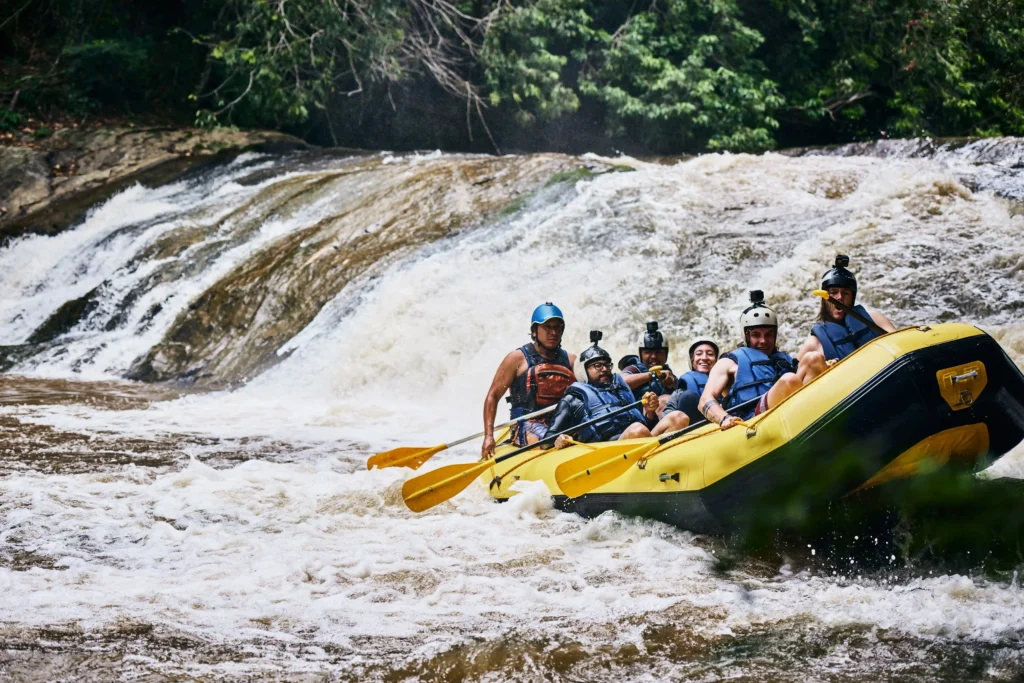Whitewater rafting: where nature’s beauty meets the thrill of rapid navigation. Sure, it’s an extreme sport with its own set of risks, but don’t let that dampen your spirit. With the right whitewater rafting safety tips, you can ride those rapids like a pro. In this guide, we’ll keep you afloat with all the essentials, from deciphering river classifications to gearing up and group antics. Ready to make a splash and not just a belly flop? Let’s dive in with me
Table of Contents
1. Understanding River Classifications

Explanation of River Difficulty Classes
Rivers are categorized into six classes based on their difficulty level:
- Class I: Easy—Smooth water with few obstructions.
- Class II: Novice—Straightforward rapids with wide, clear channels.
- Class III: Intermediate—Waves are higher, and maneuvering is required.
- Class IV: Advanced—Intense and powerful rapids requiring precise handling.
- Class V: Expert—Extremely difficult with long, violent rapids.
- Class VI: Extreme—Not navigable; considered dangerous.
Choosing the Right River for Beginners
For newbies, it’s wise to stick to Class I and Class II rivers—think of them as the training wheels of rafting. They offer gentle rapids that won’t leave you feeling like you just auditioned for a disaster movie. Do your homework on the river’s class beforehand and chat with local rafting gurus to make sure you’re not biting off more than you can paddle.
2. Essential Safety Equipment

Life Jackets, Helmets, and Other Gear
You can’t underestimate the power of proper gear—it’s the secret sauce for safety and supercharging performance. Think of essential equipment as your trusty sidekicks, shoes that hug your feet like a best friend, armor-like clothing to fend off angry weather gods, and nifty gadgets that make you feel like a superhero. Splashing out on top-tier gear isn’t just about leveling up your game, it’s your ticket to staying injury-free and strutting your stuff with confidence.
- Life Jackets (PFDs): Always wear a properly fitted life jacket. It should stay snug and not ride up over your shoulders.
- Helmets: Protect your head from potential injuries caused by rocks or other obstacles.
- Footwear: Wear water shoes or sandals with a strong grip to avoid slipping.
- Wetsuits/Dry suits: Depending on water temperature, these can protect against hypothermia.
How to Check Equipment for Safety
Before hitting the water, take the time to thoroughly inspect your gear to ensure a safe and enjoyable experience. First, check your life jacket for any signs of wear or damage and ensure it fits properly. Examine your kayak or boat for any cracks or leaks that could compromise its buoyancy. Verify that your paddle is in good condition, with no cracks or splinters.
Lastly, ensure all safety equipment, such as whistles and rescue ropes, are in place and functional. Proper preparation is key to a successful outing on the water.
- Life Jackets: Ensure all buckles and straps are intact and secure.
- Helmets: Look for cracks or signs of damage.
- Rafts: Inspect for punctures and ensure all air chambers are fully inflated.
3. Whitewater Rafting Safety Tips & Techniques
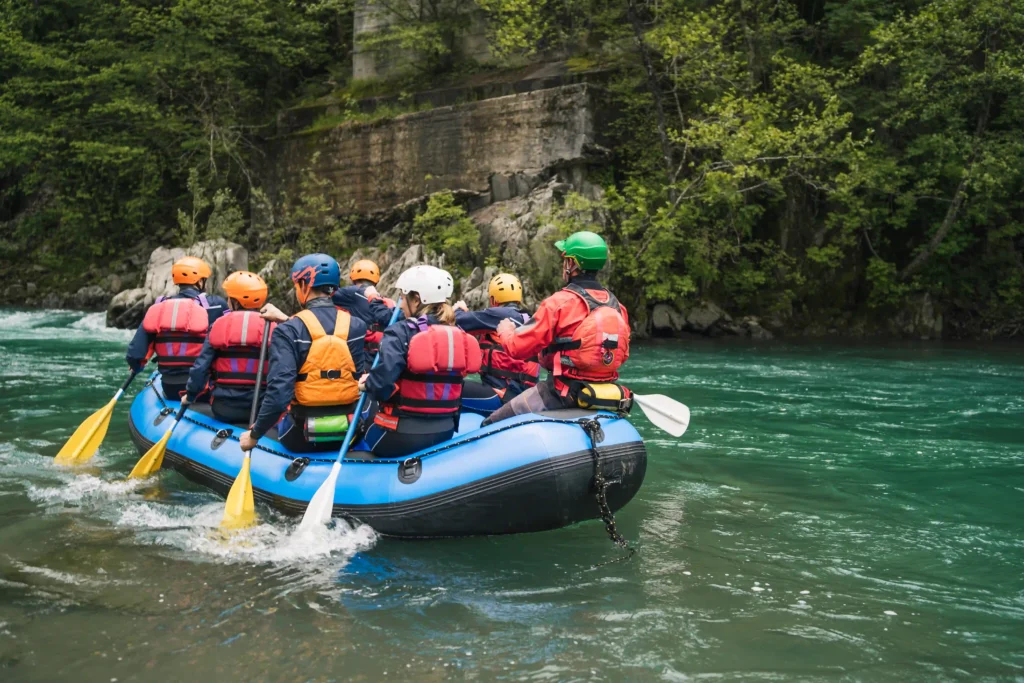
Proper Rafting Positions
Mastering the art of raft seating is like finding the perfect spot on a rollercoaster—it’s all about balance and control! Plant yourself on the raft’s side tubes, tucking your feet snugly under those trusty thwarts (cross tubes). Voilà, you’ve got stability and the perfect paddle power stance.
Whitewater Rafting Safety Tips on “How to Handle Common Emergencies“
- Falling Overboard: If you fall out, float on your back with your feet pointing downstream to avoid obstacles.
- Capsizing: In case the raft flips, stay calm, hold onto the paddle, and try to get to the upstream side of the raft to avoid being pinned.
- Strainers: These are obstacles like branches that allow water to pass through but not solid objects. If you encounter one, swim aggressively away from it.
4. Group Safety Dynamics
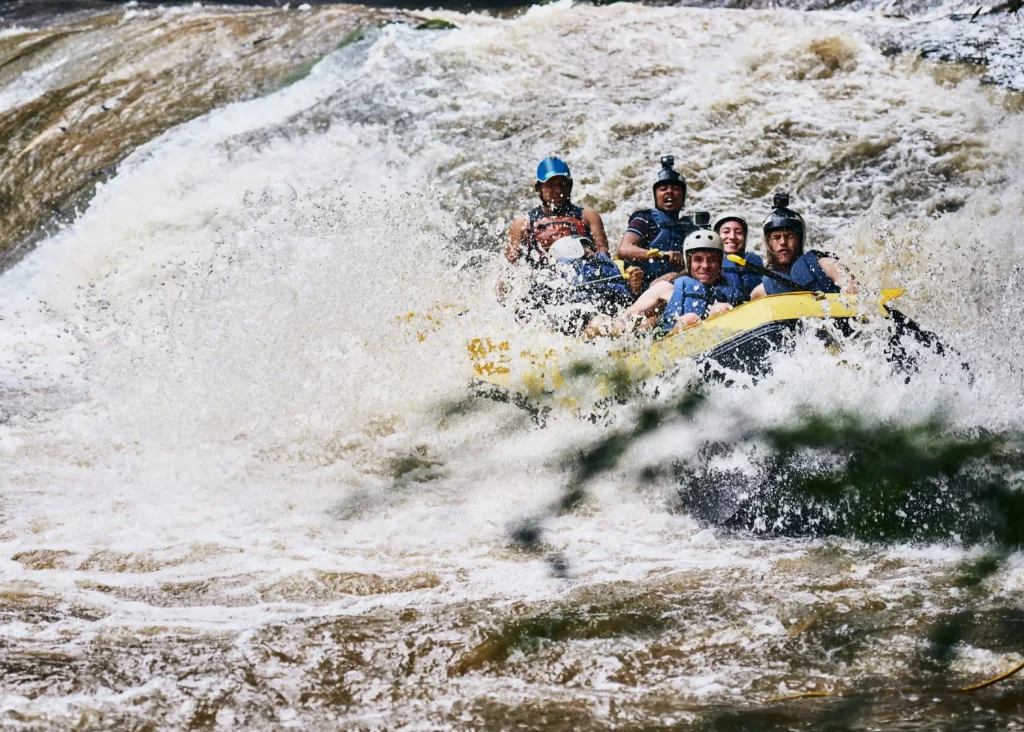
Importance of Teamwork
Rafting is an exhilarating team sport where coordination and communication are key to navigating the challenging rapids. Each team member plays a vital role, from paddling in sync to ensuring the raft doesn’t capsize. The thrill of overcoming obstacles together and the camaraderie built on the river make it a truly rewarding experience.
- Listen to Your Guide: Follow instructions carefully and promptly.
- Synchronize Paddling: Paddle in rhythm with your team to maintain control and speed.
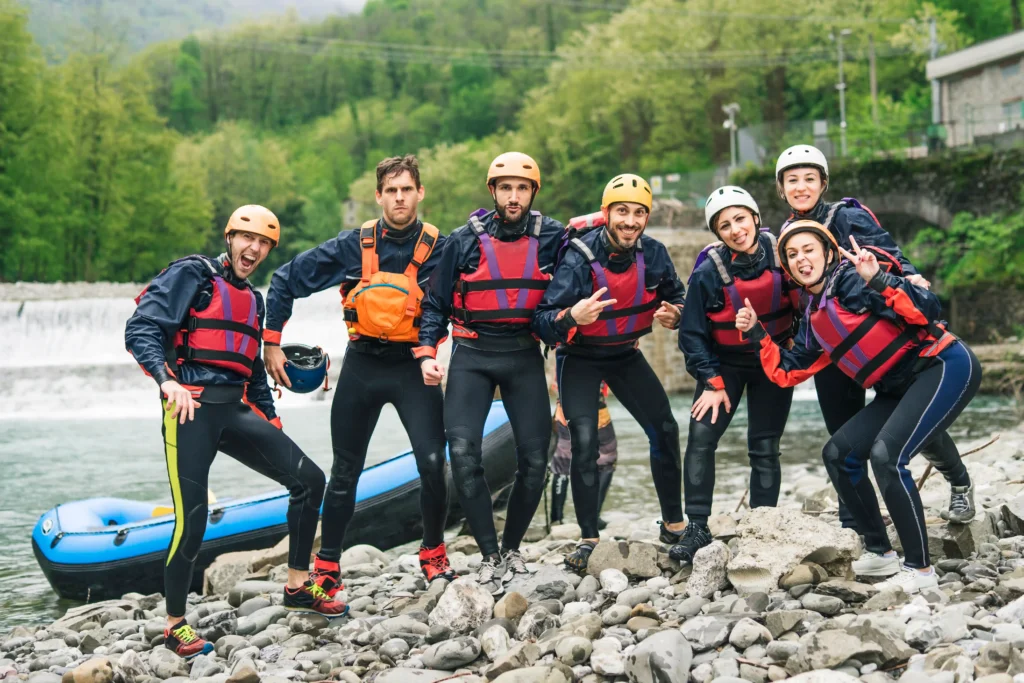
Roles Within a Rafting Group
- Leader: Usually the guide, responsible for making decisions and giving commands.
- Paddlers: Each member of the team plays a crucial role in steering and propelling the raft.
- Rescue Team: While not always present, having trained rescuers in the group adds an extra layer of safety.
Conclusion
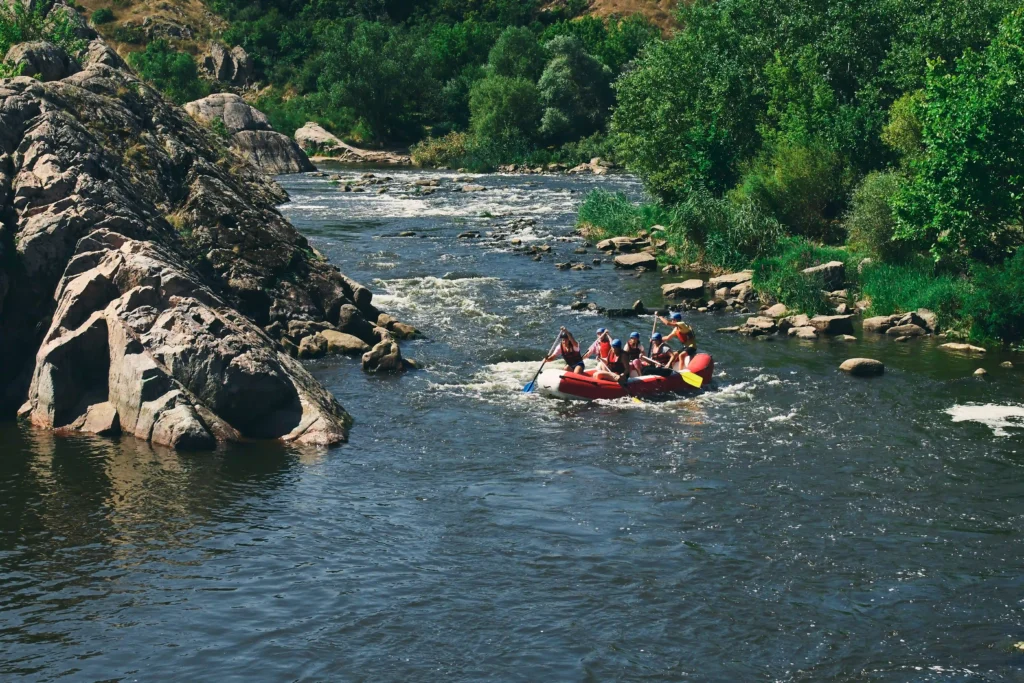
Safety should never be an afterthought when it comes to whitewater rafting. By understanding river classifications, using essential safety equipment, mastering basic techniques, and fostering strong group dynamics, you can enjoy a thrilling yet safe rafting experience.
Happy rafting, and remember—safety first
